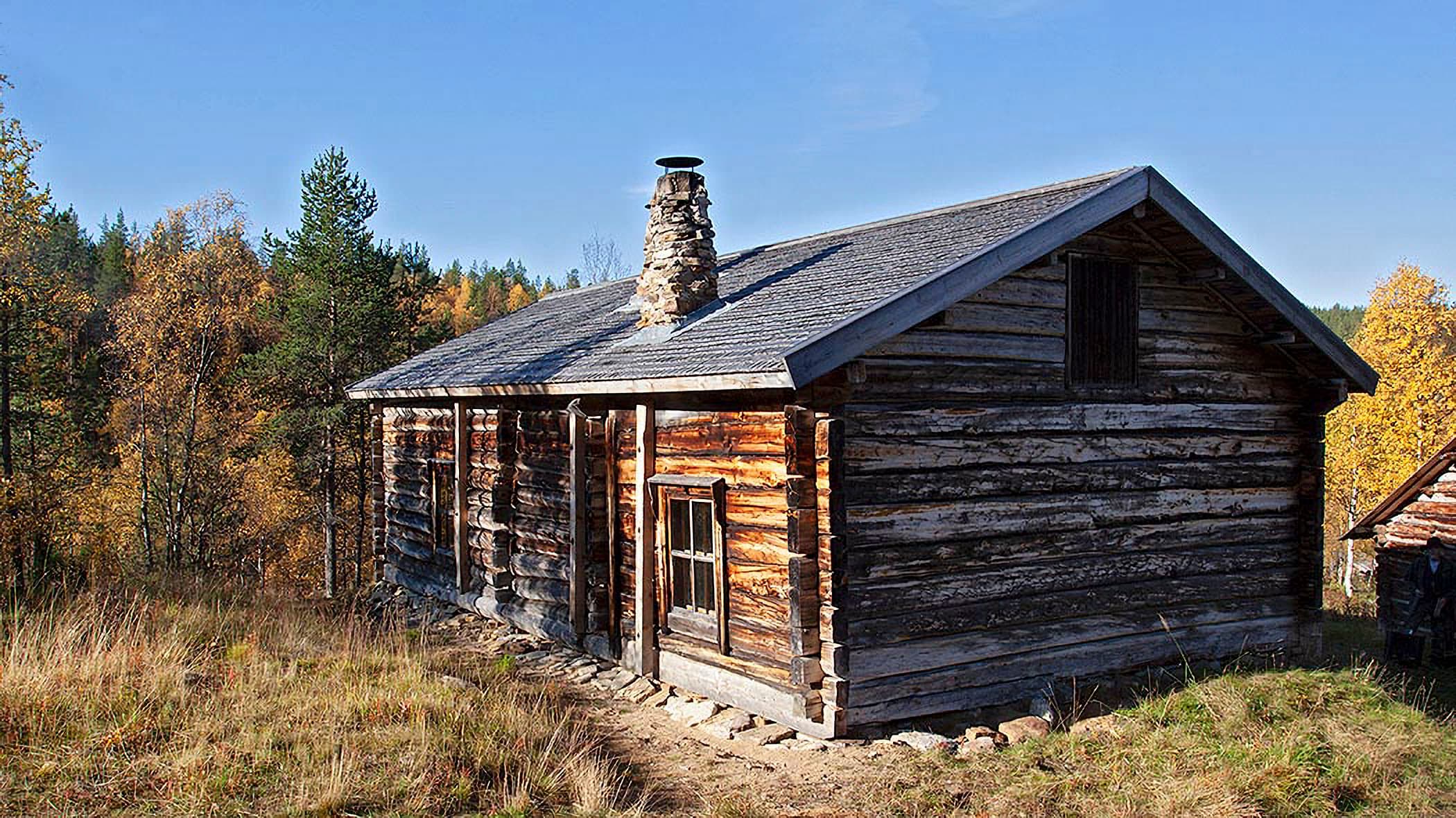Kultala (Gold Village) along Pahaoja Brook and Raahenpirtti
Those starting the Kultala summer trail pass through the yard of Pahaoja Kultala at the beginning of the route. After the yard, the Sotajoki River is crossed via a bridge
The current main building is made up of two parts. The side which is closer to the river was floated from a kilometre away, from the mouth of Vuijemihaara brach. The other side of the building, on the left if looking from the porch, which has an open fireplace, probably originates from the beginning of the 1900s. Outside, on the corner of the building, there is a short piece of rail, which was used as a bell for calling the workers for meal breaks during the time of Lapin Kulta Oy.
Nowadays the buildings of Pahaoja are managed by Metsähallitus. One room of the main building served till 2019 as a rental hut and the other room as an open wilderness hut, nowadays its a museum sight. The hut is open, but overnight stays and making fires are prohibited.
Raahenpirtti was originally a gold cabin built by sailors from Raahe in the 1870s, located on the south side of the Ivalo River, on the shore of Palsinoja, in the middle of the gold panning area. In summer, you can drive to about a kilometer away from the cabin. The path follows Palsinoja downstream. The cabin is now a museum site.
Sources
Mäkipuro, Viljo 1975: Kulta - Lappia ja kullankaivajia. Porvoo. WSOY. p. 303.
Stigzelius, Herman 1987: Kultakuume. Lapin kullan historiaa 2. Helsinki. Suomen Matkailuliitto. p. 256.

